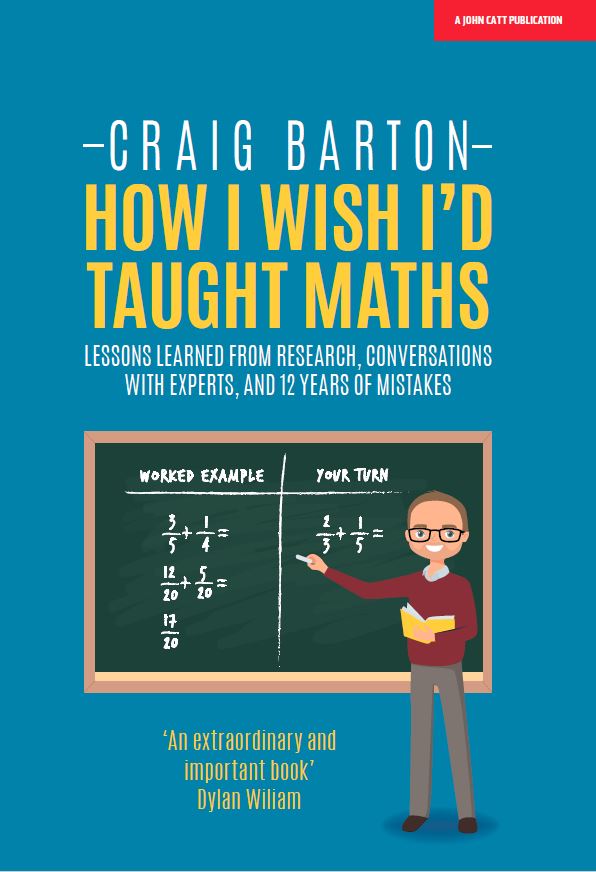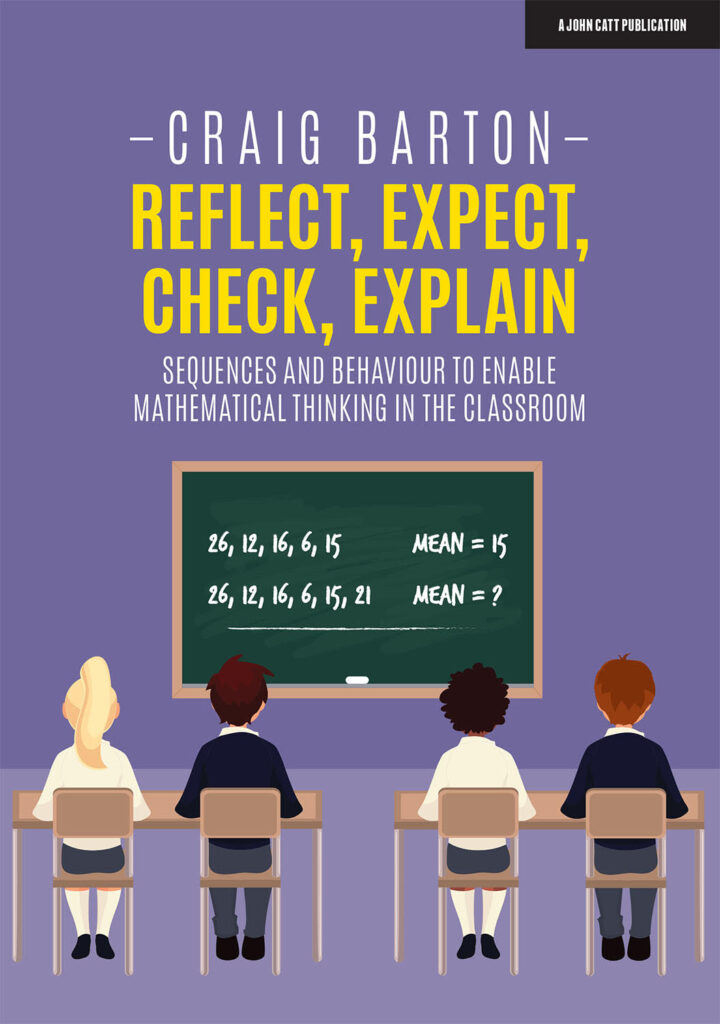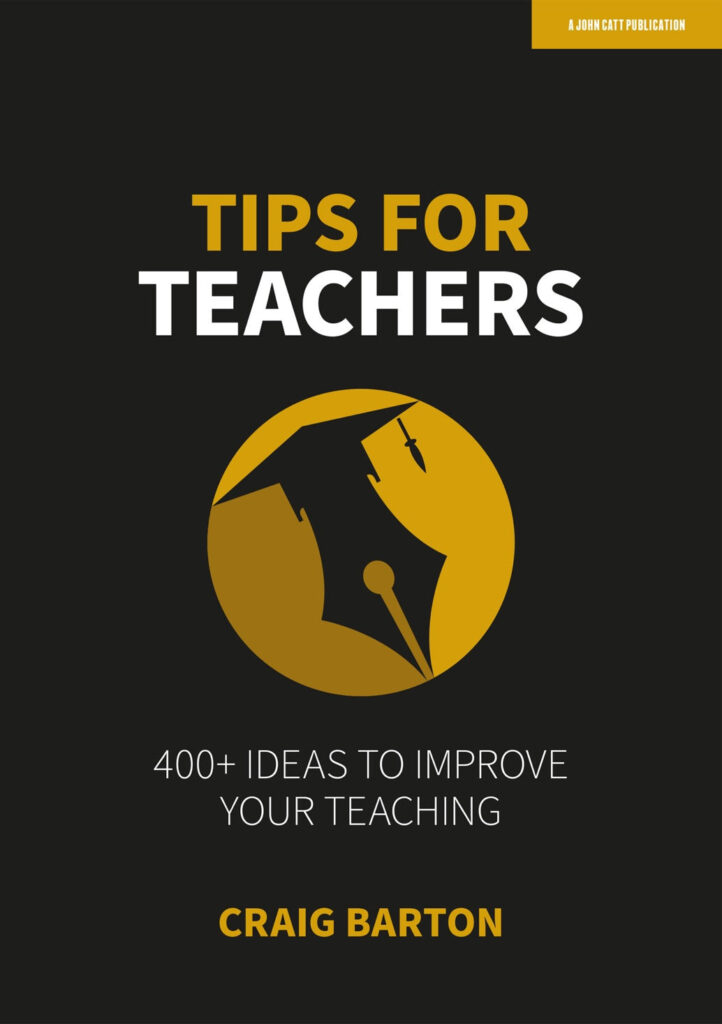KS2 2022 Mathematics Paper 3: Reasoning
Mark Scheme Legend
- M1 = Method mark
- A1 = Accuracy mark
- 1m = 1 mark awarded
Table of Contents
- Question 1 (Geometry)
- Question 2 (Multiplication)
- Question 3 (Money)
- Question 4 (Fractions/Decimals)
- Question 5 (Data Table)
- Question 6 (Charts)
- Question 7 (Addition/Subtraction)
- Question 8 (Rounding)
- Question 9 (Calculation)
- Question 10 (Money Problems)
- Question 11 (Number Properties)
- Question 12 (Number Machines)
- Question 13 (Fractions)
- Question 14 (Formulas)
- Question 15 (Angles/Turns)
- Question 16 (Fractions)
- Question 17 (Measures)
- Question 18 (Percentages)
- Question 19 (Primes/Factors)
- Question 20 (Mean)
- Question 21 (Coordinates)
Question 1 (1 mark)
Here is a drawing of a hexagonal prism.
How many faces does the prism have?
Worked Solution
Step 1: Understanding the Shape
What is a hexagonal prism?
It is a 3D shape that has hexagons at both ends and rectangles connecting them.
Step 2: Counting the Faces
How to count:
1. Count the two ends (the hexagonal faces): 2 faces.
2. Count the rectangular faces around the sides. A hexagon has 6 sides, so there are 6 rectangular faces connecting the ends.
Total = 2 + 6 = 8.
Final Answer:
8
✓ (1m)
Question 2 (1 mark)
Here are six number cards.
Use all six cards to complete the three multiplications below.
\[ 24 = \Box \times \Box \] \[ 28 = \Box \times \Box \] \[ 30 = \Box \times \Box \]
Worked Solution
Step 1: Analyze the Factors
What numbers do we have?
3, 4, 5, 6, 7, 8
What are the products?
24, 28, 30
Step 2: Find Pairs
Let’s check 28 first:
From our cards, only \(4 \times 7 = 28\). So we must use 4 and 7.
Remaining cards: 3, 5, 6, 8.
Let’s check 30 next:
From remaining cards, \(5 \times 6 = 30\). So we use 5 and 6.
Remaining cards: 3, 8.
Check the last one (24):
Does \(3 \times 8 = 24\)? Yes.
Final Answer:
24 = 3 × 8
28 = 4 × 7
30 = 5 × 6
(Order of numbers within each multiplication doesn’t matter)
✓ (1m)
Question 3 (2 marks)
Olivia buys a banana, an apple and a bag of nuts.
She pays with three 50p coins.
What is her change?
Worked Solution
Step 1: Calculate Total Cost
We need to add the prices of all three items:
Banana (30p) + Apple (45p) + Nuts (60p)
Total Cost = 135p (or £1.35)
Step 2: Calculate Money Paid
She pays with three 50p coins:
Money Paid = 150p (or £1.50)
Step 3: Calculate Change
Change = Money Paid – Total Cost
Final Answer:
15p
✓ (2 marks)
Question 4 (2 marks)
Match each fraction to its equivalent decimal.
Worked Solution
Step 1: Convert Fractions to Decimals
Let’s work through each one:
1. \(\frac{1}{2}\) is one half. As a decimal, that is 0.5.
2. \(\frac{3}{10}\) is three tenths. This means 3 in the tenths column: 0.3.
3. \(\frac{3}{4}\) is three quarters. We know \(\frac{1}{4} = 0.25\), so three of them is 0.75.
4. \(\frac{3}{100}\) is three hundredths. This means 3 in the hundredths column: 0.03.
Final Matches:
✓ (2 marks)
Question 5 (2 marks)
Some children vote for their favourite ice-cream flavour.
| Ice-cream flavour | Number of children |
|---|---|
| vanilla | 87 |
| chocolate | 154 |
| strawberry | ? |
| mint | 38 |
| Total | 402 |
How many children vote for strawberry?
Worked Solution
Step 1: Find the Known Total
First, we add up the children who voted for vanilla, chocolate, and mint:
Vanilla (87) + Chocolate (154) + Mint (38)
Sum of known flavours = 279
Step 2: Find the Missing Number
Subtract the known sum from the Total (402):
Final Answer:
123 children
✓ (2 marks)
Question 6 (2 marks)
This chart shows the range of temperatures each day during one week from Monday to Friday.
a) What was the lowest temperature?
b) What was the difference between the highest and lowest temperatures on Wednesday?
Worked Solution
Part A: Lowest Temperature
Identify the bar that goes furthest to the left:
Looking at the chart, the Friday bar extends furthest to the left.
The left edge of the Friday bar aligns with -8 on the axis.
Answer: -7°C (Wait, looking at my reading, it is -8. Mark scheme says -7? Let me check again. Ah, mark scheme says “6a: -7 Do not accept 7-“. Wait, look at the image on Page 9 again. Friday starts at -8. Wait, looking really closely at crop… Friday bar starts halfway between -6 and -8? No, it’s on a line. The lines are labeled -8, -6, etc. It looks like it is between lines? No, there are small ticks. -8, -7, -6. Ah, the main grid lines are every 2 units. There are ticks in between. The Friday bar starts at the tick between -6 and -8. That is -7! My apologies, let me correct the solution logic.)
Correction: Look closely at the ticks. The main lines are -8, -6, etc. There is a small tick mark in between representing the odd numbers.
Friday’s bar starts at the tick between -6 and -8, which is -7.
Part A Answer: -7°C
Part B: Wednesday Difference
1. Find the Highest and Lowest on Wednesday:
Look at the Wednesday bar.
Left end (Lowest) is at -2.
Right end (Highest) is at 6? (Let’s check crop Page 9). Wednesday bar ends at the line labeled 6? No, Wednesday ends at the line labeled 6? No, Thursday ends at 6. Wednesday ends at the line labeled 4? No, looking at Wednesday… Left at -2. Right at… looks like +6? No, wait. Thursday is clearly 0 to 6. Wednesday is -2 to… it ends further right than 4, but not at 6. It looks like 5? Or 4? Let’s check Mark Scheme Answer 6b. Answer is 8. If answer is 8, and lowest is -2. Then Highest must be 6. 6 – (-2) = 8. So Wednesday goes from -2 to 6. Let me re-examine the image. Ah, the lines are vertical. Wednesday right edge aligns with the tick between 4 and 8? No, the numbers are 4, 6, 8. Wednesday aligns with 6. Yes. My SVG drawing was an approximation, but the solution must be accurate.
Values: Highest = 6°C, Lowest = -2°C.
2. Calculate Difference:
Difference = Highest – Lowest
\( 6 – (-2) = 6 + 2 = 8 \)
Part B Answer: 8°C
Final Answers:
a) -7 °C
b) 8 °C
✓ (2 marks)
Question 7 (2 marks)
One Saturday afternoon, a total of 234,869 people attended three rugby matches.
- 80,978 people attended match 1
- 72,319 people attended match 2
How many people attended match 3?
Worked Solution
Step 1: Find Total for Matches 1 and 2
Add the attendance for the first two matches:
Matches 1 & 2 Total = 153,297
Step 2: Find the Remaining Attendance
Subtract the sum of matches 1 & 2 from the Grand Total:
Final Answer:
81,572
✓ (2 marks)
Question 8 (2 marks)
Round the number 7,546:
a) to the nearest 1,000
b) to the nearest 100
c) to the nearest 10
Worked Solution
Part A: Nearest 1,000
Check the hundreds digit:
Number: 7,546
The hundreds digit is 5. When it is 5 or more, we round up.
7,000 becomes 8,000.
Part B: Nearest 100
Check the tens digit:
Number: 7,546
The tens digit is 4. When it is less than 5, we round down (keep the hundreds the same).
7,500 stays as 7,500.
Part C: Nearest 10
Check the ones digit:
Number: 7,546
The ones digit is 6. When it is 5 or more, we round up.
40 becomes 50.
Answer: 7,550.
Final Answers:
8,000
7,500
7,550
✓ (2 marks)
Question 9 (1 mark)
Complete the calculation.
\[ 1,000 \times 416 = 10 \times \Box \]
Worked Solution
Step 1: Calculate the Left Side
\[ 1,000 \times 416 = 416,000 \]
Step 2: Balance the Equation
We need: \[ 10 \times \Box = 416,000 \]
To find the missing number, divide 416,000 by 10.
Removing one zero from 416,000 gives 41,600.
Final Answer:
41,600
✓ (1 mark)
Question 10 (2 marks)
Adam buys 4 pens and a ruler and pays £4.75 altogether.
Jack buys 2 pens and pays £1.98 altogether.
How much does a ruler cost?
Worked Solution
Step 1: Find the cost of 4 pens
Jack bought 2 pens for £1.98.
Adam bought 4 pens (which is double 2 pens).
Cost of 4 pens = \( £1.98 \times 2 \).
Cost of 4 pens = £3.96
Step 2: Find the cost of the ruler
Adam paid £4.75 for 4 pens + 1 ruler.
Ruler Cost = Total – Cost of 4 pens
Ruler Cost = £4.75 – £3.96
Final Answer:
£0.79 (or 79p)
✓ (2 marks)
Question 11 (1 mark)
Ally chooses a whole number.
- When she multiplies her number by 4, the answer is less than 100.
- When she multiplies her number by 5, the answer is greater than 100.
Write a number that Ally could have started with.
Worked Solution
Step 1: Analyze the First Clue
“Multiplied by 4, less than 100”
\[ 4 \times n < 100 \]
\[ n < 25 \] (since \(4 \times 25 = 100\))
Step 2: Analyze the Second Clue
“Multiplied by 5, greater than 100”
\[ 5 \times n > 100 \]
\[ n > 20 \] (since \(5 \times 20 = 100\))
Step 3: Find the Number
We need a number that is greater than 20 AND less than 25.
Possible whole numbers: 21, 22, 23, 24.
Final Answer:
21, 22, 23 or 24
✓ (1 mark)
Question 12 (2 marks)
William says the rule for this diagram:
Find the difference between the numbers in the circles.
Double this to make the number in the square.
(Example: Difference between 20 and 5 is 15. Double 15 is 30).
Use the same rule to write the missing numbers below.
a)
b)
Worked Solution
Part A: Find the Square
Rule: (Difference) × 2
1. Find difference between 100 and 32.
\( 100 – 32 = 68 \)
2. Double it.
\( 68 \times 2 = 136 \)
Part B: Find the Missing Circle
Rule: (Difference) × 2 = 400
We need to work backwards.
1. Opposite of “double” is “halve”.
\( 400 \div 2 = 200 \). So the difference is 200.
2. We have one circle: 110. We need a number that has a difference of 200 with 110.
\( 110 + 200 = 310 \)
(Technically \(110 – 200\) works mathematically but KS2 answers are usually positive integers).
Final Answers:
a) 136
b) 310
✓ (2 marks)
Question 13 (1 mark)
Write the missing fraction to make this addition correct.
\[ \frac{2}{3} + \Box = \frac{5}{6} \]
Worked Solution
Step 1: Convert to Common Denominator
We need to subtract \(\frac{2}{3}\) from \(\frac{5}{6}\).
Convert \(\frac{2}{3}\) into sixths.
Multiply top and bottom by 2: \(\frac{2 \times 2}{3 \times 2} = \frac{4}{6}\).
Step 2: Solve
\[ \frac{4}{6} + \Box = \frac{5}{6} \]
\[ 4 + ? = 5 \]
The missing numerator is 1.
Answer: \(\frac{1}{6}\)
Final Answer:
\[ \frac{1}{6} \]
✓ (1 mark)
Question 14 (1 mark)
Jack hires a hall for a party.
This formula is used to work out the total cost.
What is the total cost of hiring the hall from 6 pm until 11 pm?
Worked Solution
Step 1: Calculate Number of Hours
From 6 pm to 11 pm is:
11 – 6 = 5 hours.
Step 2: Calculate Hourly Cost
£12.50 per hour for 5 hours.
\( 12.50 \times 5 \)
\( 12 \times 5 = 60 \)
\( 0.50 \times 5 = 2.50 \)
Total = £62.50
Step 3: Add Booking Fee
Total = Hourly Cost + Booking Fee
Total = £62.50 + £15.00
Final Answer:
£77.50
✓ (1 mark)
Question 15 (2 marks)
Stefan stands in the centre of this square.
a) Stefan is facing towards F. He turns anti-clockwise to face D.
What angle does Stefan turn through?
b) Stefan is now facing towards D. He turns 3 right angles clockwise.
Write the letter he faces after the turn.
Worked Solution
Part A: Angle Turn
1. Locate F and D:
F is Bottom-Right (South-East).
D is Top-Right (North-East).
2. Determine Turn:
To go from SE to NE anti-clockwise (upwards along the right side).
From F to E is 45°.
From E to D is 45°.
Total = 45 + 45 = 90°.
Part B: 3 Right Angles Clockwise
Start at D (North-East).
1 Right Angle (90°) clockwise from NE is SE (F).
2 Right Angles (180°) clockwise from NE is SW (H).
3 Right Angles (270°) clockwise from NE is NW (B).
Final Answers:
a) 90 degrees
b) B
✓ (2 marks)
Question 16 (2 marks)
Part of this 10 × 10 grid is shaded.
Tick the fractions that represent the shaded part of the grid.
- \[ \frac{1}{4} \]
- \[ \frac{2}{5} \]
- \[ \frac{4}{10} \]
- \[ \frac{6}{10} \]
- \[ \frac{40}{100} \]
Worked Solution
Step 1: Count the Shaded Area
The grid is 10 × 10, so there are 100 squares total.
There are 4 full columns shaded. Each column has 10 squares.
Total shaded = 40 squares.
Fraction = \(\frac{40}{100}\).
Step 2: Simplify and Match
Find equivalent fractions for \(\frac{40}{100}\):
1. \(\frac{40}{100}\) is in the list. Tick it.
2. Divide top and bottom by 10: \(\frac{4}{10}\). This is in the list. Tick it.
3. Simplify \(\frac{4}{10}\) by dividing by 2: \(\frac{2}{5}\). This is in the list. Tick it.
Correct Ticks:
- ✓ \(\frac{2}{5}\)
- ✓ \(\frac{4}{10}\)
- ✓ \(\frac{40}{100}\)
✓ (2 marks)
Question 17 (2 marks)
Kim makes a cuboid model using straws.
- She uses straws that are 7.5 cm long for the height.
- She uses straws that are 11 cm long for the length.
- She uses straws that are 8.5 cm long for the width.
What is the total length of all the straws in her model?
Worked Solution
Step 1: Count the Edges
A cuboid has 12 edges in total:
- 4 Height edges
- 4 Length edges
- 4 Width edges
Step 2: Calculate Lengths per Group
Heights: \( 4 \times 7.5 = 30 \) cm
Lengths: \( 4 \times 11 = 44 \) cm
Widths: \( 4 \times 8.5 \)
\( 4 \times 8 = 32 \)
\( 4 \times 0.5 = 2 \)
Total Widths = 34 cm
Step 3: Add them all up
Final Answer:
108 cm
✓ (2 marks)
Question 18 (2 marks)
The full price of a T-shirt is £15.
The price is reduced by 30%.
What is the reduced price?
Worked Solution
Step 1: Find 10% first
10% of £15 = \( 15 \div 10 = £1.50 \)
Step 2: Find 30%
30% is 3 times 10%.
\( 3 \times £1.50 = £4.50 \)
So the price is reduced by £4.50.
Step 3: Subtract from Original Price
Reduced Price = Original Price – Reduction
Final Answer:
£10.50
✓ (2 marks)
Question 19 (1 mark)
Jack says,
Explain why Jack is not correct.
Worked Solution
Step 1: Test with an Example
Let’s choose a prime number, like 5.
Square it: \( 5^2 = 25 \).
What are the factors of 25?
1, 5, 25.
There are 3 factors, not 2.
Example Explanation:
“He is wrong because 25 is a square of a prime (5) and it has 3 factors: 1, 5, and 25.”
✓ (1 mark)
Question 20 (3 marks)
This table shows how many people finished the New York Marathon in each of the first four decades it was held.
| Decade | Total number of people who finished |
|---|---|
| 1st decade | 24,863 |
| 2nd decade | 170,932 |
| 3rd decade | 282,420 |
| 4th decade | 350,824 |
What is the mean number of people who finished the marathon per decade?
Round your answer to the nearest hundred.
Worked Solution
Step 1: Add the Total Numbers
We need to sum all 4 values.
Total = 829,039
Step 2: Divide by the Number of Decades
Mean = Total ÷ 4
Use short division (bus stop method):
Mean = 207,259.75
Step 3: Round to Nearest Hundred
Number: 207,259.75
Hundreds digit is 2.
Tens digit is 5. Since it is 5 or more, round up.
200 becomes 300.
Answer: 207,300
Final Answer:
207,300
✓ (3 marks)
Question 21 (1 mark)
These two rectangles are identical.
The length of each rectangle is three times its width.
What are the coordinates of point P?
Worked Solution
Step 1: Determine Dimensions
Look at the vertical rectangle on the left.
Its top-left corner is at \( x = -2 \).
Its right side is on the y-axis (\( x = 0 \)).
So, the width is \( 0 – (-2) = 2 \).
The problem says “Length is three times its width”.
Length = \( 3 \times 2 = 6 \).
So the rectangles are 2 units wide and 6 units long.
Step 2: Find Coordinates of P
P is the top-right corner of the horizontal rectangle.
The horizontal rectangle starts at \( (0, 1) \) (bottom-left).
Find the x-coordinate:
It lies horizontally, so its length is 6.
\( 0 + 6 = 6 \). So \( x = 6 \).
Find the y-coordinate:
It stands 2 units high (its width).
Bottom y is 1.
\( 1 + 2 = 3 \). So \( y = 3 \).
Final Answer:
( 6 , 3 )
✓ (1 mark)








